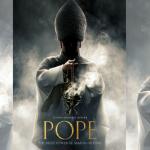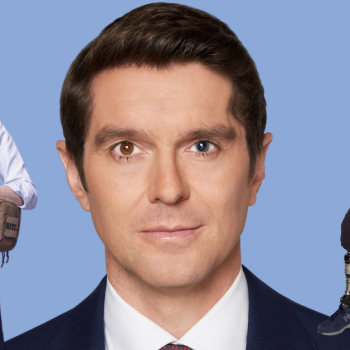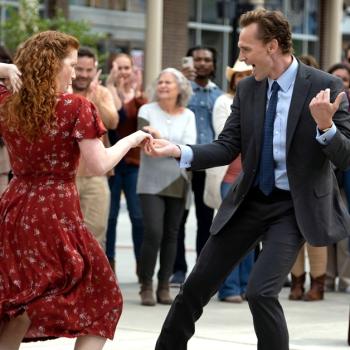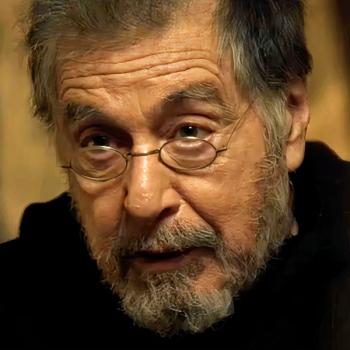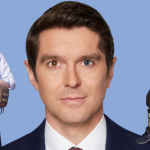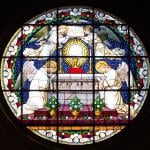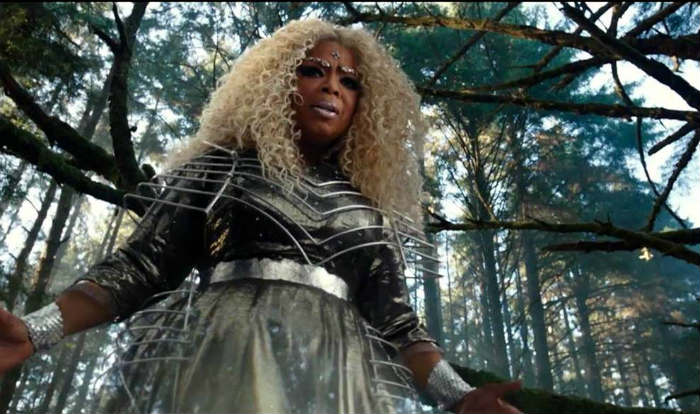 I accompanied a friend to a screening on Saturday night of Disney’s new, megabudget “A Wrinkle in Time.” I’m still not sure what I saw.
I accompanied a friend to a screening on Saturday night of Disney’s new, megabudget “A Wrinkle in Time.” I’m still not sure what I saw.
From my review at Family Theater Productions’ Faith & Family Media Blog:
Directed by Ava DuVernay from a screenplay by Jennifer Lee and Jeff Stockwell, it follows the adventures of awkward but smart teen Meg Murry (Storm Reid), her adopted genius little brother Charles Wallace (Deric McCabe), and her admiring pal Calvin (Levi Miller). They follow the lead of three powerful beings — vaguely goddess-y Mrs. Which (Oprah Winfrey), mercurial Mrs. Whatsit (Reese Witherspoon) and quote-spouting Mrs. Who (Mindy Kaling) — to find Meg’s missing scientist father, Dr. Alex Murry (Chris Pine), who mysteriously vanished four years earlier.
Also starring are Gugu Mbatha-Raw as Meg’s mother, Dr. Kate Murry; Zach Galifinakis as the Happy Medium; Michael Pena as Red; and David Oyelowo as The It.
The idea is that Alex discovered a way to hop between dimensions — called “tessering” — and in his desire to know the universe, got lost in it. The three Mrs.-es, decked out in a dizzying variety of big dresses, bigger hair and disco makeup, take the trio of kids on a weird trip to computer-generated worlds, ending in a confrontation with a big dark spidery thing, which … well, I don’t even know what exactly happened.
There’s a lot of hugging and declarations of love, but I honestly had no clue what was going on most of the time. Caleb gazes adoringly at Meg, who’s gutsy and clever, but generally cranky and out of sorts; while Charles Wallace alternates between precocious cuteness and radiating snarky menace like the demonic moppet from “The Omen.”
And what of the Christian influences woven through the original novel of the same name by Episcopalian author Madeleine L’Engle (who didn’t live to see this — blessings be upon her). Well, click here to read the whole piece and find out.
And BTW, there are some folks complaining that the book didn’t have overt Christian references. I’m not a L’Engle reader, but this post from Terry Mattingley’s On Religion blog disagrees:
It would be hard, explained L’Engle, to grasp this book’s cosmic war between life and death, good and evil, darkness and light without two crucial passages.
A key character is Mrs. Who, who speaks only in famous quotations. She is part of a trio of mysterious characters – guardian angels, according to L’Engle – who help the children in the novel. To explain the power of “light,” Mrs. Who quotes the Gospel of John: “The light shineth in the darkness, and the darkness comprehended it not.”
Also, in a climactic word of encouragement to heroine Meg Murray, Mrs. Who quotes St. Paul’s first letter to the Corinthians: “The foolishness of God is wiser than men; and the weakness of God is stronger than men. … God hath chosen the foolish things of the world to confound the wise; and God hath chosen the weak things of the world to confound the things that are mighty.”
None of the novel’s Bible quotations made it into the Disney film, but there were new quotes from popular music and the musical “Hamilton.”
“L’Engle’s work is a highly imaginative one in which good and evil can literally be sensed and felt by the characters,” said Barbara Nicolosi Harrington, a former Catholic nun who now teaches screenwriting.
These kinds of inner, spiritual realities are hard to visualize on screen, plus it’s clear that the “heart of L’Engle’s work is deeply Christian,” she said. “Surely these themes would cause ambivalence or disgust in secular filmmakers. Now you have a recipe for the gutting of a beloved Christian classic into a weird, even creepy mess.”
In addition, screenwriter Jennifer Lee (“Frozen”) knew Christian references were in there and excised them. From Uproxx:
The book is pretty open about its Christian ideals and the movie doesn’t directly reference them. As a fan of the book how do you approach that aspect?
What I looked at, one of the reasons Madeleine L’Engle – as I’ve been told; I never got to meet her – but one of the reasons it had that strong Christian element to it wasn’t just because she was Christian, but because she was frustrated with things that needed to be said to her in the world and she wasn’t finding a way to say it and she wanted to stay true to her faith. And I respect that and I understand those feelings of things you want to say in the world that need to be said that are out there. In a good way, I think there are a lot of elements of what she wrote that we have progressed as a society and we can move onto the other elements. In a sad way, some of the other elements are more important right now and bigger – sort of this fight of light against darkness. It’s a universal thing and timeless and seems to be a battle that has to keep being had.
It also feels like this is a movie that celebrates inclusiveness and diversity, so having it be about one religious denomination wouldn’t really be keeping with that theme. Does that make sense?
It does. And I can’t put words in her mouth – and I worked with one of our producers, Catherine Hand, who was very close to her – but that wasn’t her intention. Her intention was looking at the ordinary real hero in an extraordinary situation. The power of love in this world, and we stayed very true to that. And her lens through it was Christianity and everyone has a different lens in. And that’s what inclusiveness is to me in this film, is really looking at all of us have a role to play in this no matter where we come from or what we look like.
So, there you go …
https://youtu.be/UhZ56rcWwRQ
Image: Courtesy Walt Disney Company
Don’t miss a thing: head over to my other home, as Social Media Manager at Family Theater Productions; and check out FTP’s Faith & Family Media Blog, and our YouTube Channel.


